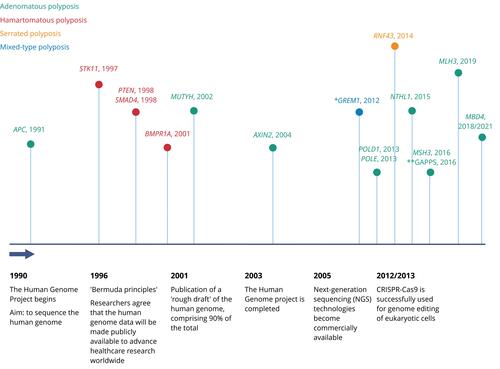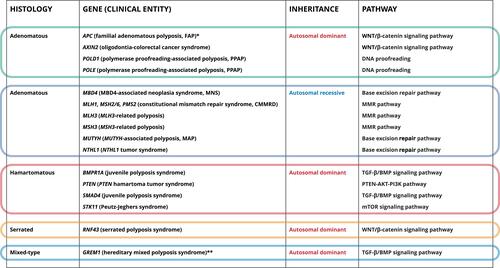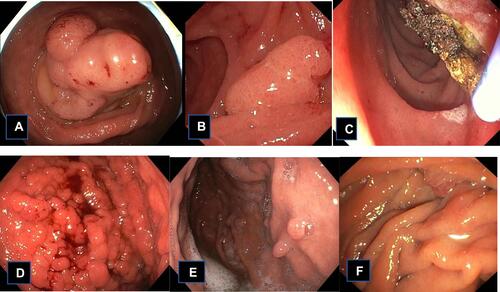Figures & data
Table 1 Novel Polyposis Syndromes
Figure 1 Timeline polyposis syndromes. *Upstream 40 kb duplication. **Gastric adenocarcinoma and proximal polyposis of the stomach syndrome (GAPPS) caused by variants in the APC promoter 1B.

Figure 2 Polyposis syndromes distributed according to histology, inheritance pattern and pathway. *Pathogenic variants in the APC promoter 1B predisposes to gastric adenocarcinoma and proximal polyposis of the stomach syndrome (GAPPS). **Caused by a duplication 40kb upstream of GREM1.

Figure 3 Clinical pictures of patients with polyposis Adenoma in the right colon (A) from a patient with MUTYH-associated Polyposis. (B) A 15 mm adenoma in the duodenum from the same patient. It was removed by argon plasma coagulation (C). (D) Diffuse fundic gland polyposis in a patient with GAPSS and a pathogenic variant in the promotor 1B of APC: c.-191T>C. The lesions were random biopsied, and the histopathology showed low-grade dysplasia. (E and F) is from a 60y old patient that had a colectomy as a teenager. At regular GI surveillance few small rectal adenomas were detected, while the duodenum and the major papilla were without polyps. Following genetic counseling a pathogenic variant in POLE, p.(Leu424Val) was detected, and gynecological surveillance was added to her surveillance program.

Figure 4 Genetic work up of patients suspected of a underlying polyposis syndrome. *The list of relevant genes is dynamic, but at present (2021) the following genes should be included: APC, POLE, POLD1, MBD4, MUTYH, NTHL1, MSH2, MLH1, MSH3, MSH6, STK11, SMAD4, BMPR1A, PTEN, RNF43, GREM1, MLH3, PMS2, AXIN2.

